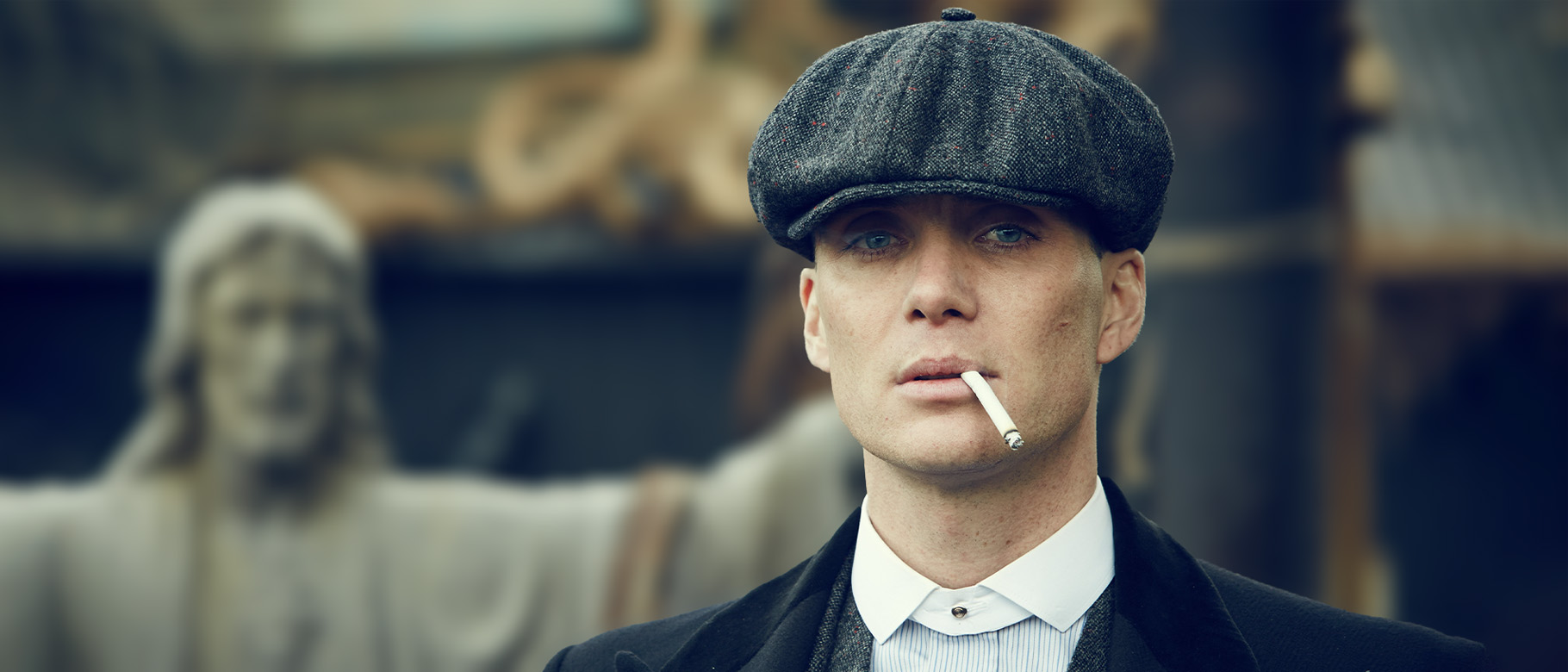

Peaky Blinders isn’t exactly historically accurate when it comes to its style. Set throughout the ‘20s and ‘30s, the suits are shorter and slimmer than what was popular at the time, the trousers are often cropped and the suits over-accessorised. Tie clips are worn with waistcoats at the same time as pocket watches and collar pins. One thing the show does get right, though, is the shirts. The signature Peaky Binders look consists of a dark grey textured wool three-piece suit, black overcoat, leather boots and white or striped shirt with a detachable, starched club collar. The latter of which is often worn without a tie, giving a hard, distinctive look that continues to influence the way men dress.
While hard to imagine today, detachable collars were the norm for men as far back as the mid-1800s, although they were usually worn with ties. Starched so they never creased, they ensured the wearer looked sharp and respectable. It’s little wonder Tommy Shelby and his gang adopted them. In the early seasons of the show they placed equal emphasis on climbing the social ladder as they did ascending the ranks of the underworld. From the outside at least, their suits, shirts and coats made them look like honest citizens. This is something the real life Peaky Blinders were surely well aware of as they terrorised the streets of Birmingham in the early 20th century. Clothes were rooted in the very concept of their gang, and while they favoured silk scarfs instead of club collars, like their on-screen protagonists, the razor blades hidden in their baker boy hats belied their natty appearances.
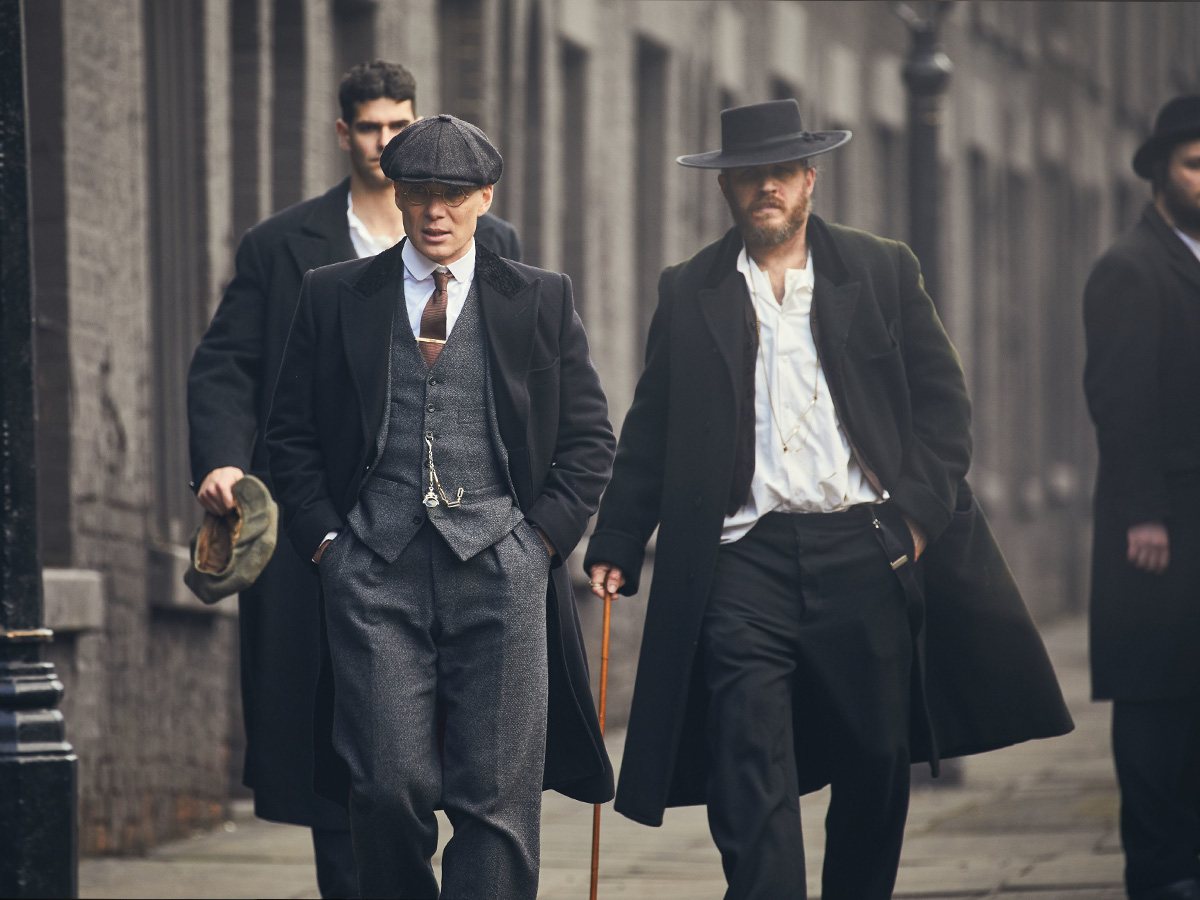
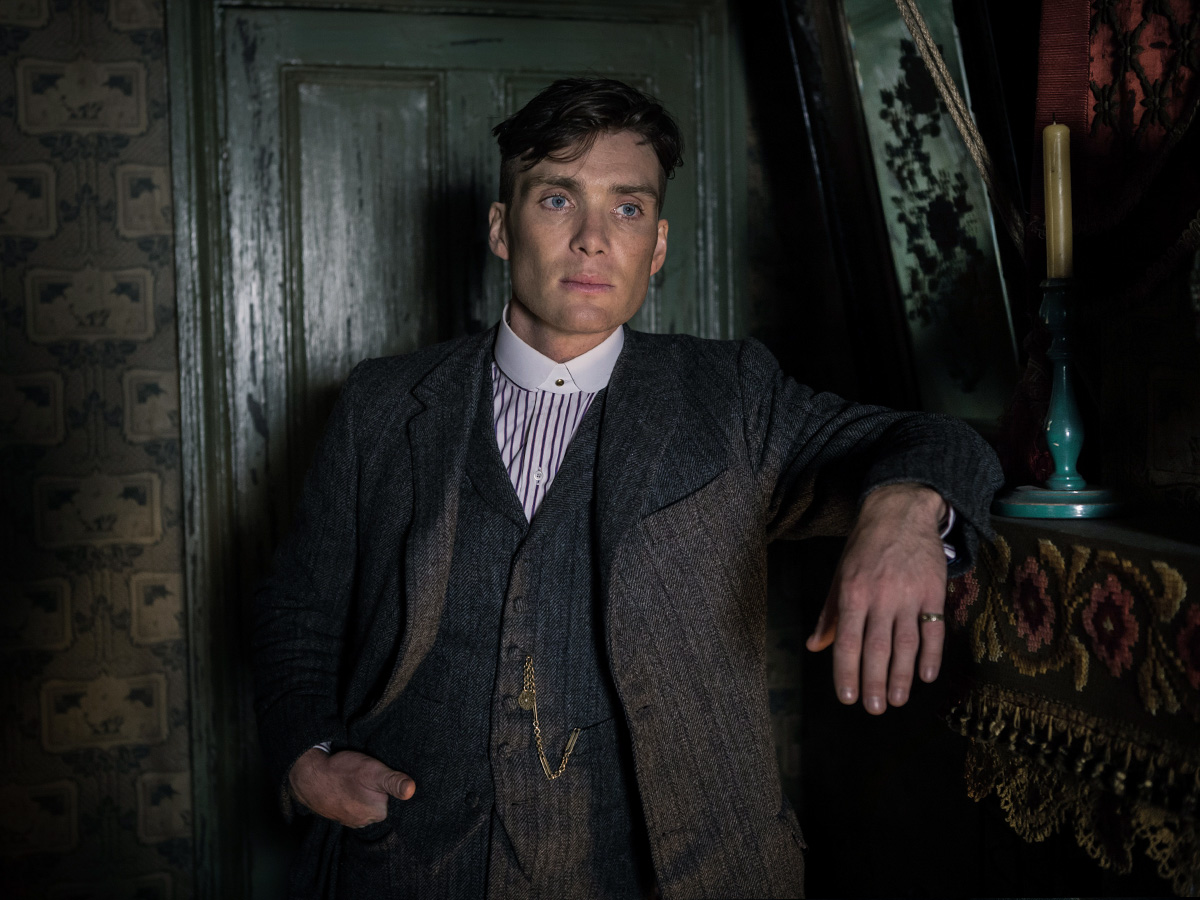
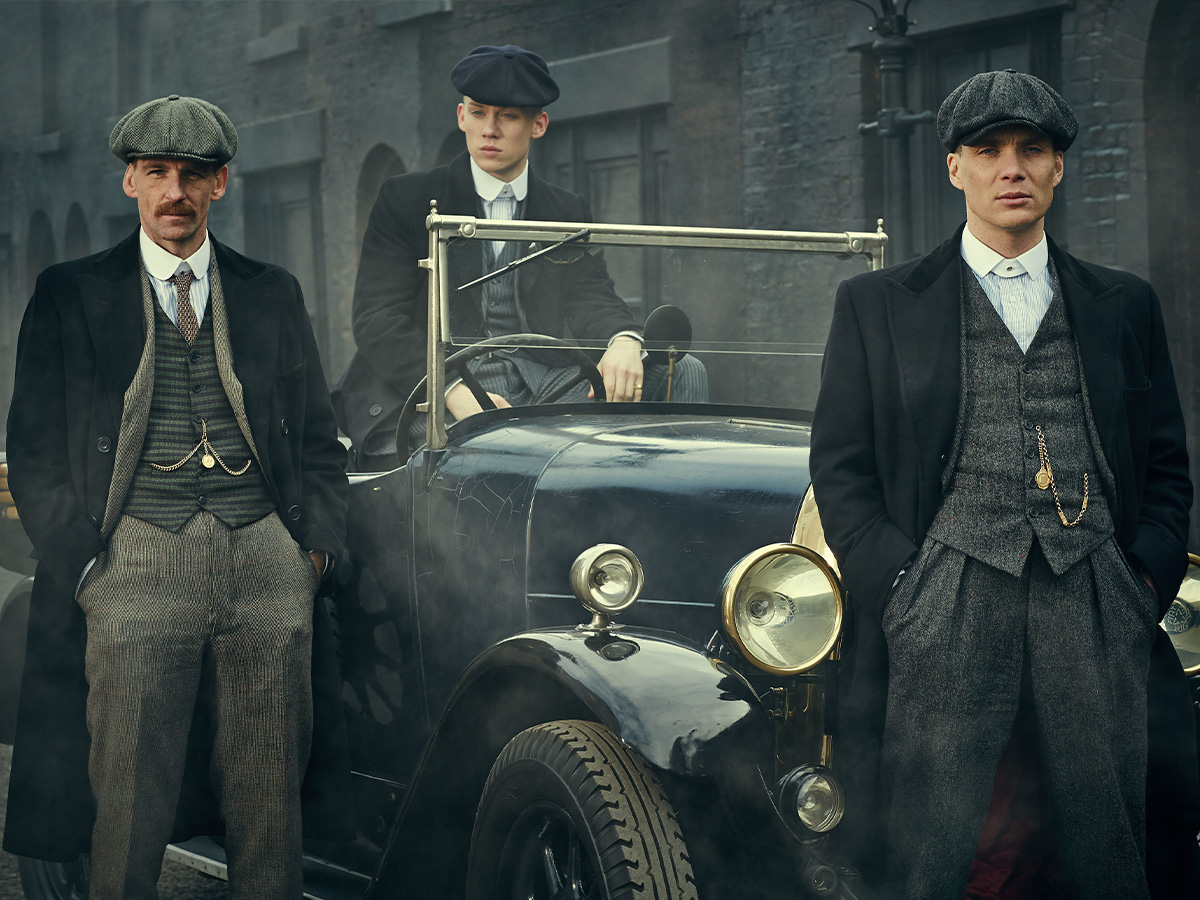
Throughout the ‘20s and ‘30s, menswear was subtly shifting away from the rigidity of old, and new cuts, fabrics and shirt styles were coming to the fore. Peaky Blinders reflects this. As we are introduced to new characters we see how diverse tailored clothing can be. Tom Hardy’s Alfie Solomons is deliberately dishevelled, with softer collared jackets, rumpled shirts and a wide brim hat. Adrien Brody’s Luca Changretta on the other hand is all about power suiting, with wide peaked lapels, full-cut pinstriped suits and long point-collared shirts. It’s a very luxurious, Americanised take on dressing true to the period, which sticks out on the grey streets of Birmingham.
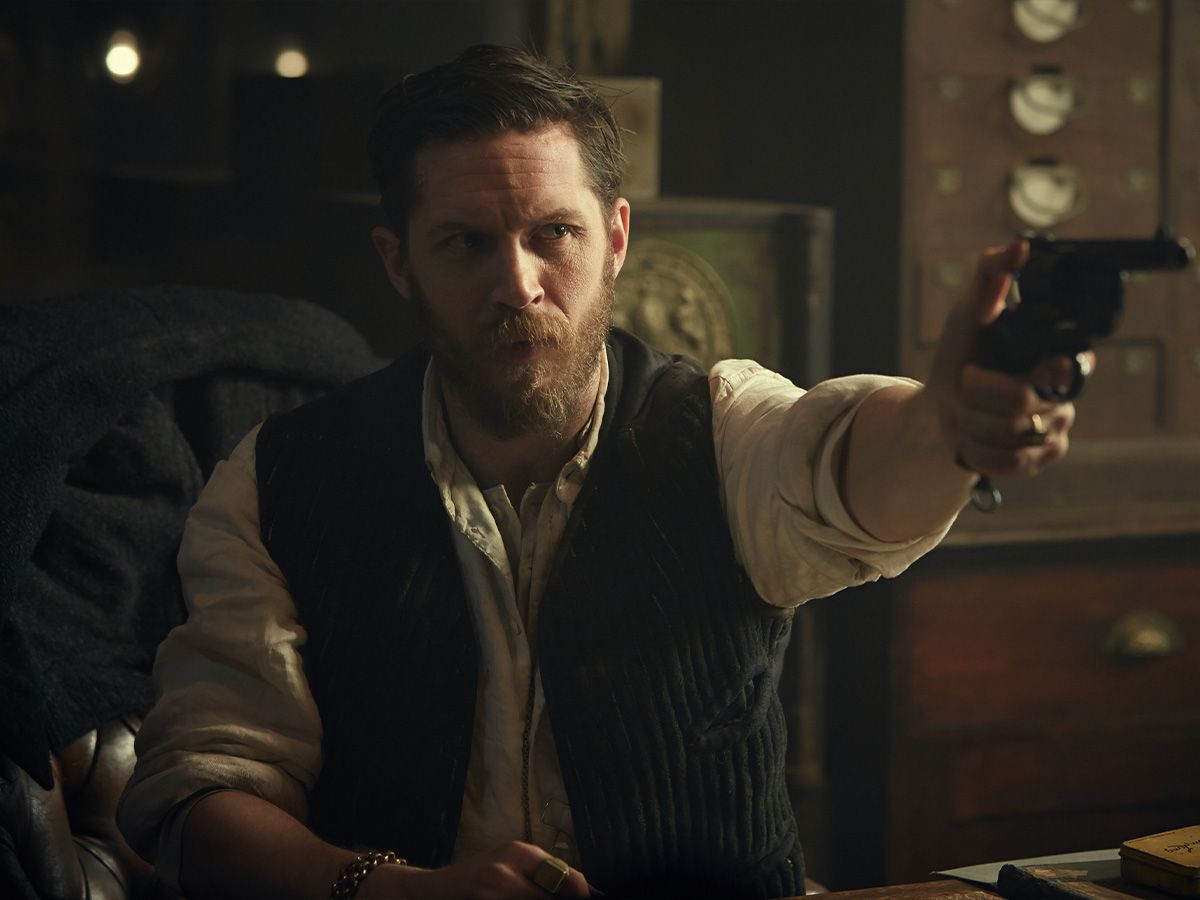
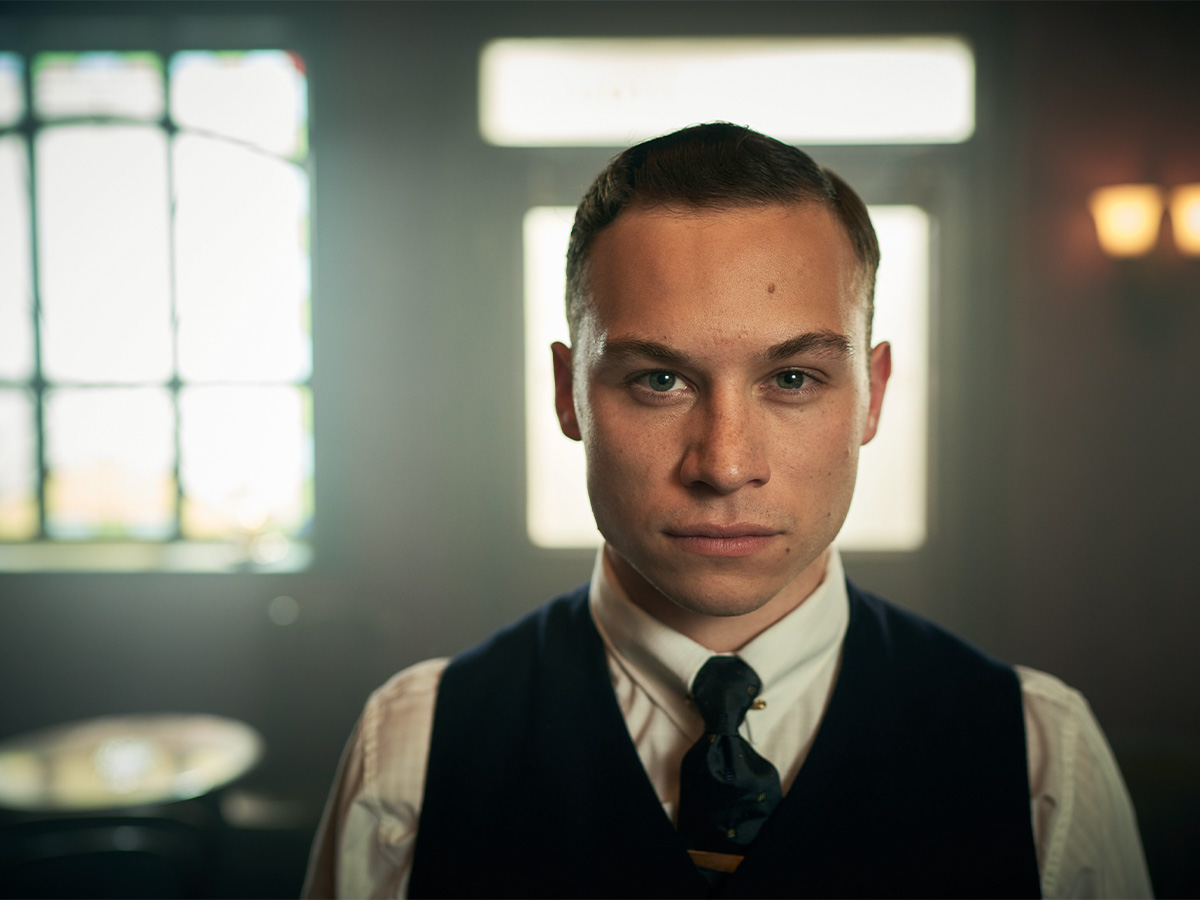
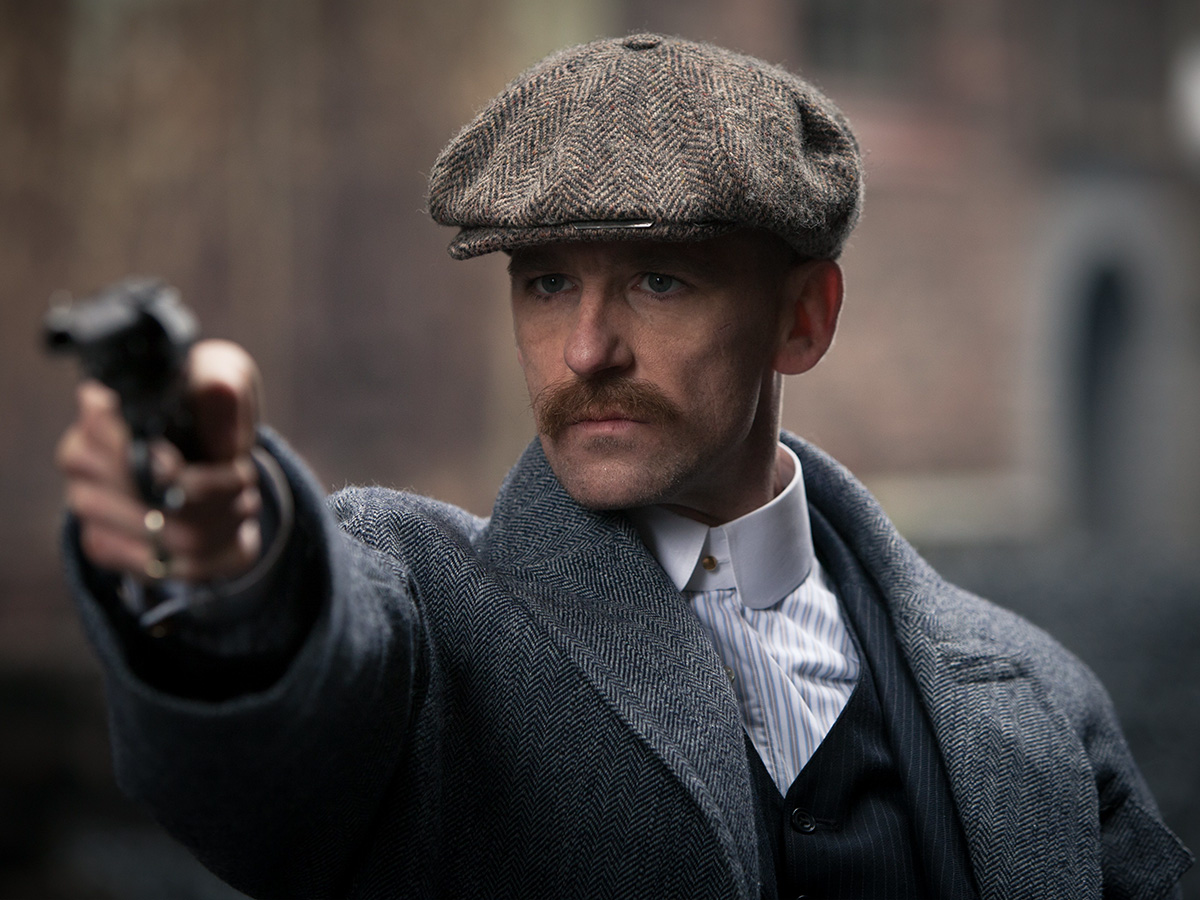
Speaking of luxury, the sixth and most recent series steps things up a notch. Set in the early 1930s, the characters are older and (theoretically) wiser. While Tommy does occasionally slip into his old uniform, his tailoring is now cut from expensive wool and cashmere blends, his jackets have deep red silk linings and his collars are long and fastened with a pin. And he looks all the sharper for it. While his fundamental look remains the same, his style has subtly moved on from the show’s beginnings. Which is an interesting point to consider if you want to mix up your own wardrobe. Changing the small details of a look – whether through the collar choice or fit of a trouser leg – can make a big difference. Perhaps the key to unlocking the potential of your signature style then is evolution, not revolution.
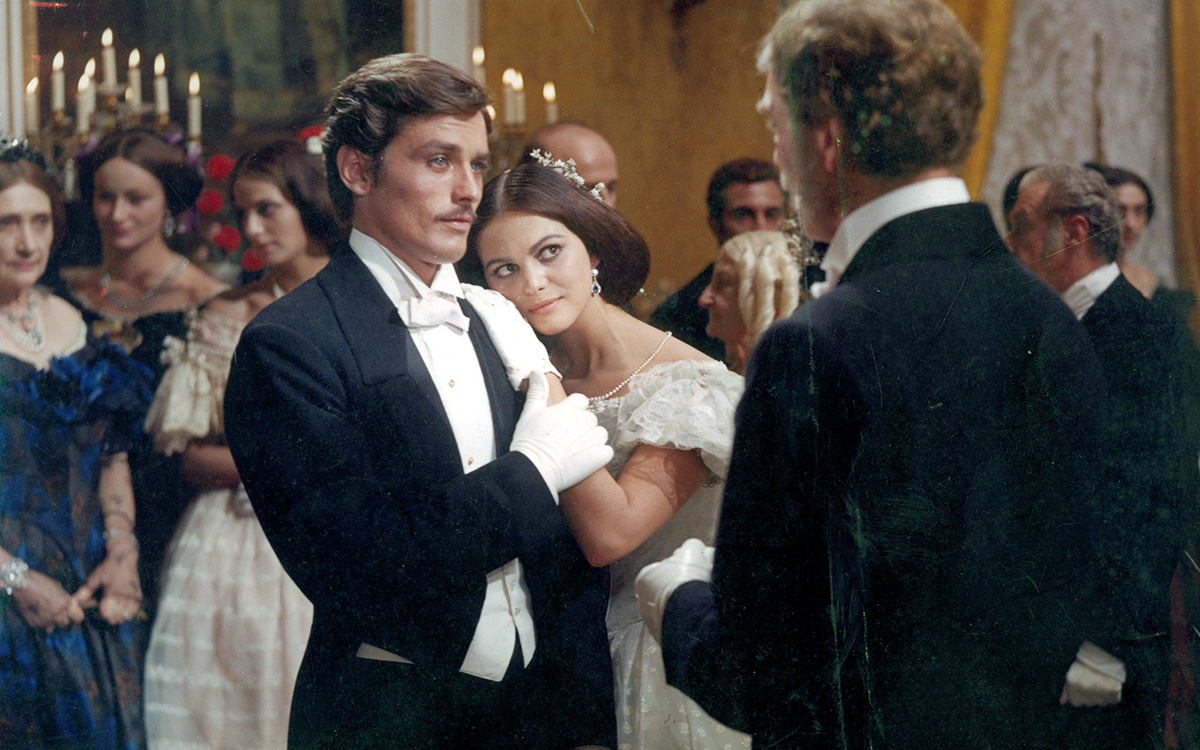
All hail ‘The Leopard’
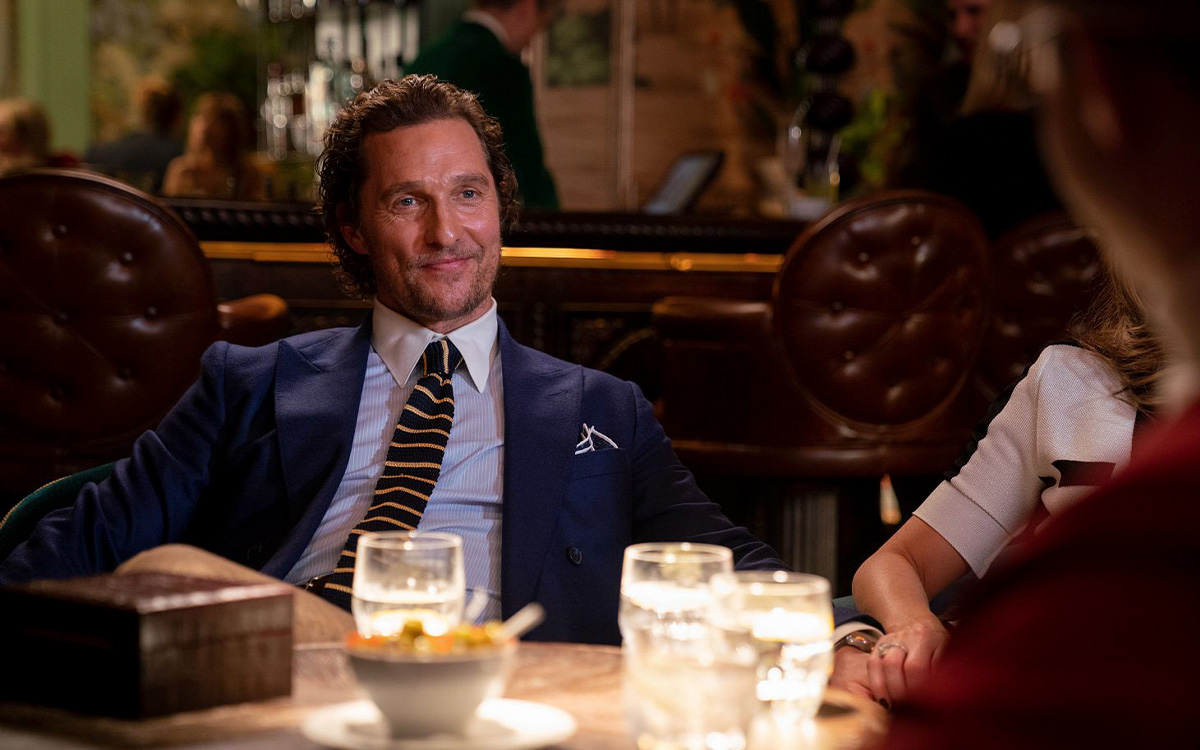
The Gentlemen and old-school gangster style
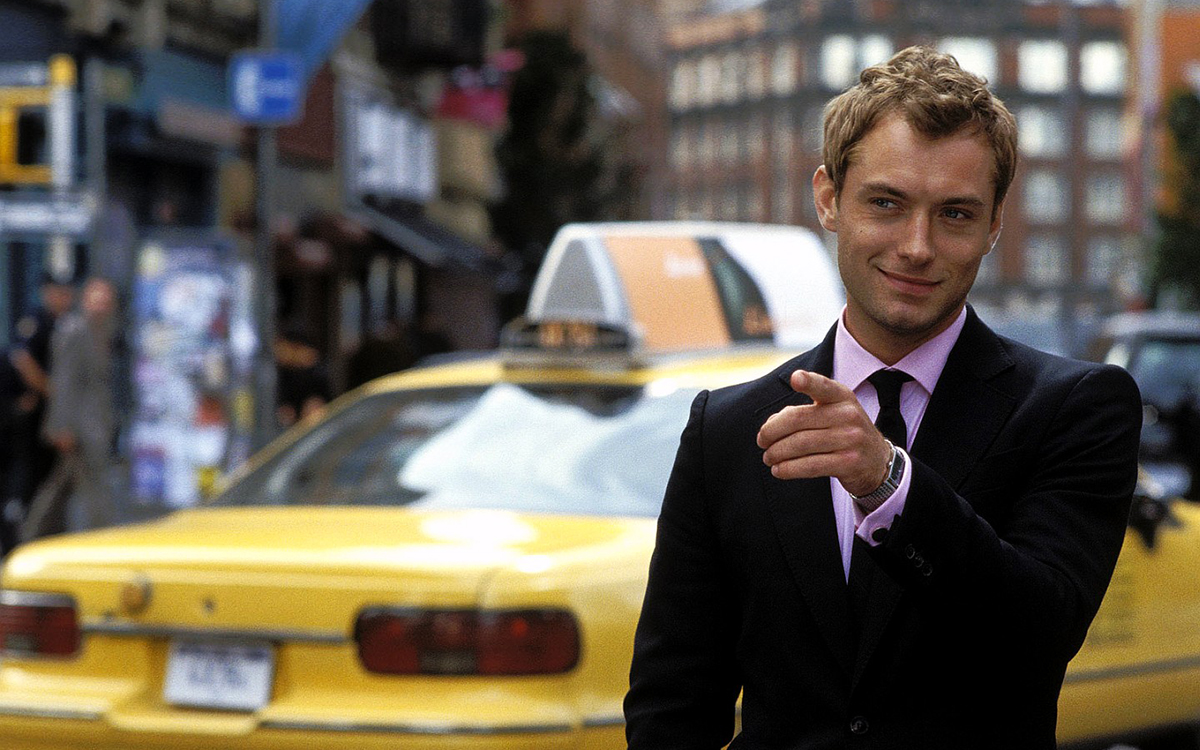
In the Pink: Jude Law’s Alfie
Cotonificio Albini S.p.A. - Via Dr. Silvio Albini 1, 24021 Albino (BG) – Italy
Società con unico socio - diretta e coordinata da Albini Group S.p.A.
P.I. 01884530161 - C.F. 08743540158 - Iscritta al Registro Imprese di Bergamo - REA 244649
Capitale sociale sottoscritto e versato € 11.170.960